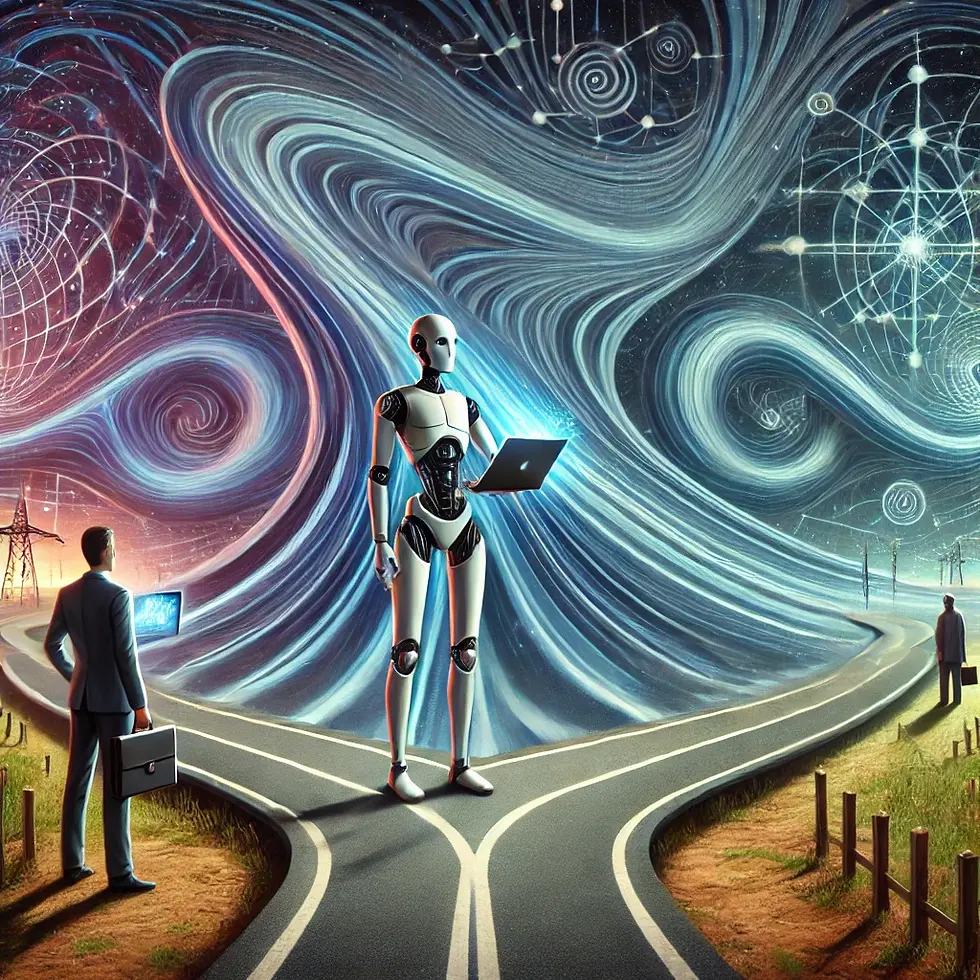Decoding the Cipher: The Interwoven Symbolism of “Cypher” Across Language, Film, and Pop Culture
- amuggs82
- Feb 21
- 4 min read

In the ever-evolving landscape of cinema and pop culture, the term “cypher” (or “cipher”) has been used both explicitly and implicitly to denote mystery, encryption, betrayal, and identity. From its linguistic origins to its symbolic presence in films like The Matrix and Mission: Impossible – Dead Reckoning Part One, the word “cypher” carries a deeper resonance. It bridges historical meaning with modern storytelling, offering a thematic throughline that connects disparate narratives.
The Origin of “Cypher” in Language and Culture
To understand how “cypher” functions as a narrative device in film, we must first explore its roots. The word stems from the Arabic “ṣifr” ( ص ِ فْر), meaning “zero” or “empty”, which was introduced into European languages through medieval translations of mathematical texts. This idea of “nothingness” transformed over time into the English concept of a cipher as a code, puzzle, or hidden message.
• Greek Influence: Although no direct equivalent exists in Ancient Greek, the philosophical concept of “μηδέν” (miden), meaning zero, aligns with the Arabic ṣifr. Greek also contributes “κρυπτός” (kryptós), meaning “hidden”—a direct link to cryptography.
• Germanic and French Influence: The word entered European languages through Latin (cifra) and Old French (cifre), leading to the German “Ziffer” (digit) and “Chiffre” (code).
• Aramaic Connections: The Aramaic “ṣiphrā” ( צִ פְ רָ א), meaning “writing” or “scroll,” demonstrates an early association with recorded secrets and information.
This semantic evolution from zero to encryption, to secrecy and deception, sets the stage for how cypher is used in modern storytelling.
The Cypher Archetype in Film: Betrayal, Mystery, and Identity
In cinema, “cypher” is not just a word—it’s an archetype, often embodied by characters who are either manipulators of information or those who struggle with their identity within a larger system.
Cypher in The Matrix (1999): The Judas Complex In The Matrix, the character Cypher (Joe Pantoliano) epitomises the betrayer, the one who rejects painful truth in favour of comforting illusion. His name is no accident—it reflects his role as:
1. A Zero (Nothingness): He sees no meaning in the “real world” and wishes to return to the simulated bliss of the Matrix.
2. A Codebreaker (Encryption/Decryption): Like a cipher in cryptography, he acts as a conduit between worlds, working with Agent Smith to dismantle the resistance.
3. A Judas Figure: Just as Judas betrayed Jesus for silver, Cypher betrays Morpheus and Neo for the promise of a luxurious yet fabricated life.
His famous steak monologue—“Ignorance is bliss.”—encapsulates the thematic struggle between truth and deception, which is central to both the character and the larger narrative of The Matrix.
The Cipher in Mission: Impossible – Dead Reckoning Part One (2023): The Digital Battlefield
Decades after The Matrix, the cipher as a narrative device resurfaces in Mission: Impossible– Dead Reckoning Part One (2023), but this time, it is not just a person—it’s an algorithm.
1. The Airport Cipher Scene: A Modern Battleground
• The scene introduces the mystery of the cipher (the key), which controls The Entity, a rogue AI that manipulates digital information.
• Ethan Hunt (Tom Cruise) and his team engage in both a physical and digital chase, showing how modern espionage is as much about deciphering false information as it is about outrunning enemies.
• The key itself acts as a metaphorical cipher—whoever unlocks it controls reality.
2. Gabriel as the Human Cipher
• Gabriel (Esai Morales) serves as a living embodiment of the cipher, operating as the AI’s enforcer, yet remaining mysterious, almost spectral in his motivations.
• His presence suggests a deeper, unseen code that Ethan must decipher, much like Neo had to unravel the Matrix.
The Evolution of the Cipher Character: From Analog to Digital
• The Matrix (1999) -> Cypher as a man choosing illusion over truth
• Mission: Impossible – Dead Reckoning (2023) -> The cipher is a digital force that rewrites reality itself. This shift reflects how modern storytelling mirrors societal fears—from the deception of individuals (betrayal, faith, and choice) to the deception of an entire world (AI’s ability to manipulate truth in the digital age).
Conclusion: The Cipher as a Reflection of Our Reality
From ancient numerology to modern cinema, the cipher/cypher has evolved from a symbol of nothingness to a representation of secrecy, deception, and control.
1. In language, it began as “zero” (ṣifr), evolved into cryptography, and became synonymous
with hidden messages.
2. In The Matrix, it embodied a man’s choice between truth and illusion.
3. In Mission: Impossible – Dead Reckoning, it evolved into a digital entity capable of rewriting reality itself.
Ultimately, the cipher/cypher is a mirror for society’s evolving relationship with truth and perception. Whether in a film, a line of encrypted code, or a philosophical dilemma, the cipher forces us to ask:
Do we control information, or does information control us?
As AI advances and the digital landscape becomes harder to distinguish from reality, Mission: Impossible and The Matrix remind us that deciphering truth is more crucial than ever. As we navigate an increasingly digital world, understanding these layers becomes essential. The cipher and the desiccated character both serve as reminders of the importance of looking beyond surfaces to discern reality.
You’ve got a character that needs to be desiccated and completely non-human in its position but has to be believably human in the way that it moves. Well, that’s motion capture in a nutshell. – John Berton Jr., ILM visual effects supervisor

Comments